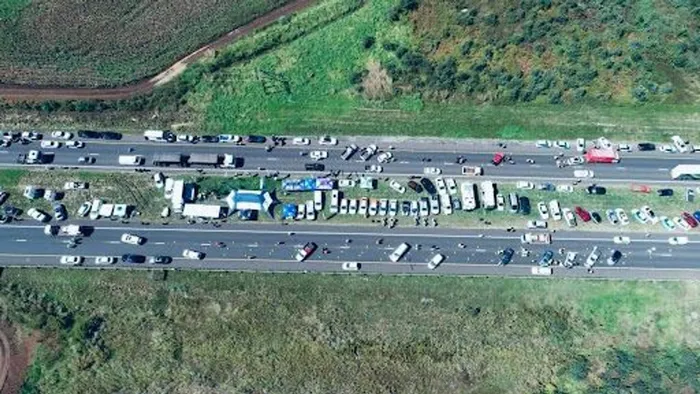Authorities ready for Easter road rush

THE 2022 Easter Road Safety Campaign was launched on the N12 in Breswol, near the Gauteng-Mpumalanga border.
The government expects the Easter weekend to be most challenging due to increased volumes of traffic as more people will be travelling “unrestricted” for the first time in two years following the lifting of the National State of Disaster.
This is according to Transport Minister Fikile Mbalula, who launched the 2022 Easter Road Safety Campaign on the N12 in Breswol, near the Gauteng-Mpumalanga border, yesterday.
Mbalula was joined by Deputy Minister Sindisiwe Chikunga and Gauteng MEC for Roads, Transport and Public Works Jacob Mamabolo, his Mpumalanga counterpart Mohita Latchminarain, and Road Traffic Management Co-operation chief executive Advocate Makhosini Msibi, among others.
He said the focus for the long weekend would be on the use of safety belts, the roadworthiness of vehicles, fatigue, drunk driving, pedestrian safety and dangerous driving which includes speeding, recklessness and overtaking on barrier lines.
It was concerning that in January and February this year 1 823 people lost their lives on South African roads, Mbalula said, which was higher compared to the 1 521 fatalities in the same period in 2021.
“Over the next few days our national roads will once again carry millions of motorists, one of the greatest movements of people over a single long weekend, as people will be travelling to different destinations for the Easter holidays.
“Many of these travellers will be worshippers making their way to various places of pilgrimage. The desire to travel is high among this group, considering the Covid-19 restrictions on travel and religious gatherings over the last two years, which have since been relaxed with the lifting of the State of Disaster.
“Others will be crossing our land borders to neighbouring states to spend time with families and loved ones. Some will be crossing provincial boundaries to visit families and taking a much-needed break from work and institutions of learning in the cities.
“We know from previous travel patterns that the busiest routes at this time of the year are the N1 from Gauteng to Limpopo, N3 from Gauteng to KwaZulu-Natal, N2 from the Western Cape to the Eastern Cape, N14 from Gauteng to the North West, and N12 from Gauteng to Mpumalanga.”
He said this busy period required of them to skilfully deploy resources across the country if they were to succeed in arresting the carnage on the roads.
“The realisation of the 25% reduction on road fatalities must be driven by innovative solutions that not only effect behavioural change by road users, but also maximise compliance with the law.”
The government would be deploying law enforcement officers, through a collaborative mechanism that has proven effective over the years, drawn from the South African Police Service, National Traffic Police, provincial traffic officers and municipal traffic officers, who will be keeping in mind that the safety of the pedestrians, motorists and other vulnerable road users is paramount.
Mbalula said all provinces had experienced a spike in fatalities in the first two months of the year, with Gauteng leading with 355 fatalities, followed by KwaZulu-Natal with 269, the Western Cape with 249, Limpopo with 239 and the Eastern Cape with 232. Then followed the North West with 170 fatalities, Mpumalanga with 158, the Free State with 96 and the Northern Cape with 66 fatalities.
“The leading causes of fatal crashes in the two-months period were accidents with pedestrians, followed by single vehicle overturning, hit-and-run and head-on collisions. Drunk driving is suspected to be an underlying factor in the hit-and-run incidents and overturning of single vehicles,” Mbalula added.